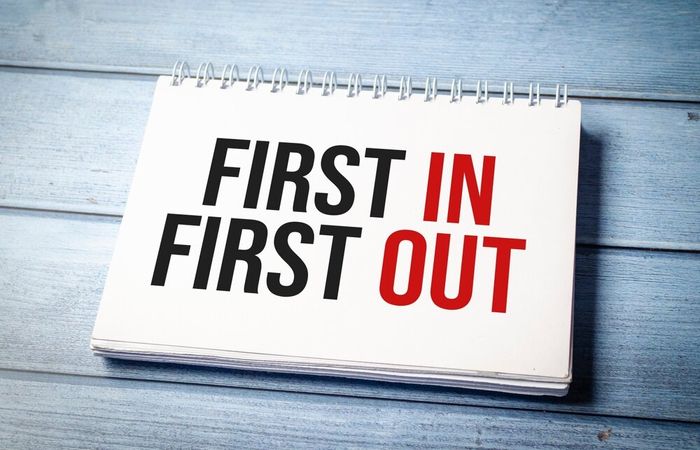FIFO Management System: The Key to Effective Shopify Inventories
Published June 23, 2024.

Although there are methods and tips for selling when out of stock on Shopify, such as back-in-stock notification forms and monitoring your inventory-to-sales ratio, managing your stock can be the difference between a profitable, customer-serving business and a failed store with all its capital tied into inventory and no sales.
Why Is Inventory Management Important?
Knowing the cost of your inventory will not only help prevent you from over-investing in stock but also help reduce warehouse costs, help monitor theft and loss, and help produce more accurate stock cost values.
The logistics of stock management can become complicated, especially for larger stores. That's why implementing an inventory tracking system is crucial for a smoothly running online store.
What Is the FIFO Inventory Management Method?
The FIFO (first in, first out) inventory management system aims to value a business's inventory in a way that reduces the loss of products because it has expired or become obsolete.
This inventory costing assumption method calculates the inventory cost of the first items that arrived in stock and uses the newest inventory as the remaining stock.
In short, the first stock and its associated costs are used before your new stock.
Why Use FIFO for Shopify Instead of Other Methods?
FIFO is the most widely-used inventory management method and the most accurate when assuming expected costs with the flow of goods.
Additional benefits of FIFO include the following:
- Using FIFO in your Shopify automated inventory management system will provide you with the most accurate way to align stock prices and sales.
- FIFO will help reduce the impact of inflation if we assume that the cost of old inventory is less than newer inventory. Therefore, your net profit will be higher.
- FIFO will help reduce expired stock and items that have become obsolete.
However, it's important to note that there are other inventory management methods available to consider, such as:
- LIFO Inventory Management The last in, first out method is the opposite of FIFO, where the last inventory purchase is the first to be sold.
- Average Cost Inventory It is calculated by dividing the total cost of your goods by the total number of goods available for sale. This produces a single average cost price.
- Specific Inventory Tracking It is used when all finished product costs are known. With all aspects known, any of the above methods are appropriate.
Calculating FIFO
To calculate your COGS (cost of goods sold) using the FIFO method, simply calculate the cost of the oldest inventory sold, and multiply it by the number of items sold.
In a formula, this would look as follows:
COGS (FIFO) = (Cost of Oldest Inventory) x (Total Inventory Sold)
Note: If newer inventory (with a higher/lower cost) is used to complete sales, you will need to take this into account.
Example of FIFO Calculations
To gain a better understanding, let's consider the following T-shirt-selling Shopify store, which has inventory purchase data that looks like this:
Date
February
April
August
Quantity
200
150
200
Cost/T-Shirt
$10
$12
$16
COGS (FIFO)
$2,000
$1,800
$3,200
- Assume you sell 250 T-shirts (Total Inventory Sold) and want to work out your cost price using the FIFO method.
- As FIFO uses old stock first, the first 200 shirts will be sold from the oldest inventory, February, for $10 per T-shirt (Cost of Oldest Inventory).
- The remaining 50 T-shirts represent the newest inventory and will be taken from the purchase made in April at the cost of $12 per T-shirt (Cost of Newest Inventory).
The COGS will, therefore, be calculated as follows:
Total Inventory Sold = 250
Cost of Oldest Inventory = (200 x $10) + (50 x $12)* = $2,600
COGS (February-April) = $2,600 x 250 = $650,000
* Cost of Newest Inventory
This will leave your ending inventory as follows:
COGS (April) = 100 x $12 = $1,200
COGS (August) = 200 x $16 = $3,200
FIFO Inventory Management: A Must-Have for Shopify Sellers
Correctly managing your store's inventory will make adding products to Shopify collections easier because you'll be able to forecast inventory. You'll have an idea of your stock levels, the cost of stock, and how quickly your stock is being sold.
The FIFO method is a global go-to for inventory management systems, as it will help reduce obsolete products while compensating for the rising prices of goods.

